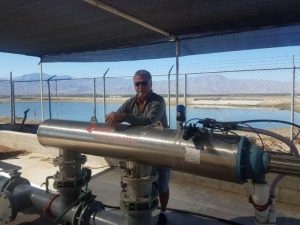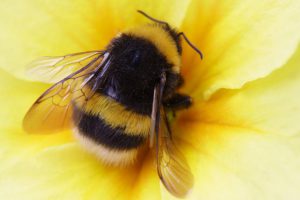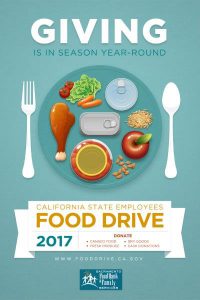Our annual Ag Day is today (March 20) at the State Capitol, and our theme this year, “Climate Smart – California Grown,” is far more than a slogan. It’s actually a key part of the road map for the future of farming and ranching in our state. CDFA and the Brown Administration share a essential priority with agriculture – keep it sustainable and flourishing into the 21st century and beyond.
There is a strong likelihood that California will be asked to produce more food in the coming years while dealing with access to fewer natural resources, so we are embracing that challenge with several programs that are assisting rural communities while helping farmers and ranchers increase water efficiency and energy efficiency, and reduce greenhouse gas emissions.
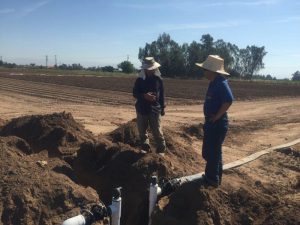
Hmong farmers in Fresno County are among those receiving SWEEP grants to improve water efficiency and reduce greenhouse gas emissions.
- State Water Efficiency and Enhancement Program (SWEEP) – This program provides financial incentives for agricultural operations to invest in water irrigation and/or distribution systems that save water and reduce greenhouse gas (GHG) emissions. To date SWEEP has received $67.5 million from the Greenhouse Gas Reduction Fund and also includes $38.7 million in matching funds. The estimated GHG savings are 74,139 metric tons CO2 equivalent per year – equivalent to removing nearly 15,900 cars off the road annually. The estimated water savings are 96,009 acre feet per year – equivalent to water in about 48-thousand Olympic-sized swimming pools. SWEEP would receive an additional $20 million in SB 5, the California Drought, Water, Parks, Climate, Coastal Protection and Outdoor Access For All Act of 2018.
- Healthy Soils Program – This program provides financial assistance for incentivizing and demonstrating the implementation of conservation agricultural management practices (such as cover crops, compost application, no-till and hedgerows) that sequester carbon, reduce atmospheric GHGs and improve soil health. A total of $7.5 million has been invested in this program, so far, with an additional $5 million proposed in the Governor’s proposed 2018-2019 budget and another $10 million proposed in SB 5.
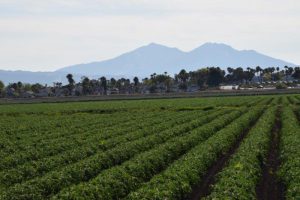
Farmland in Contra Costa County protected by a SALC conservation easement. Photo courtesy of the Cecchini family.
- Sustainable Agricultural Lands Conservation Program (SALC) – This program, administered by the Strategic Growth Council, provides funds for agricultural conservation easements and local agricultural protection strategies to protect lands from conversion to urban and rural residential development. Climate investments of $79 million have been made, so far.
- Dairy Digester Research and Development Program – CDFA’s Dairy Digester Research and Development Program supports projects that reduce greenhouse gas emissions from California dairy operations by capturing them and harnessing them as a renewable energy source. More than $47 million has funded 24 digester projects, so far, and the Governor’s proposed budget for ’18-’19 has a combined $99 million for this program as well as the next one below.
- Alternative Manure Management Program – CDFA’s Alternative Manure Management Program (AMMP) supports non-digester based manure management practices on California dairy and livestock operations, such as conversion to dry scrape or solid separation, followed by drying or composting, and pasture-based management. A total investment of $9.8 million has occurred, so far.
- FARMER Program for Ag Replacement Measures for Emission Reductions – This program, administered by the California Air Resources Board, is intended to reduce agricultural sector emissions by providing grants, rebates, and other financial incentives for agricultural harvesting equipment, heavy-duty trucks, agricultural pump engines, tractors, and other equipment used in agricultural operations. An allocation of $85 million was made for 2017-2018, and an additional $102 million is proposed in the Governor’s ’18-’19 budget.
- Food Production Investment Program – This is administered by the California Energy Commission to provide grants, loans or any financial incentives to implement projects that reduce greenhouse gas emissions for food processors and also to support renewable energy projects in the agricultural sector. A total of $66 million has been allocated for 2017-2018.
The California Climate Investment programs for agriculture demonstrate the extreme importance of working and natural landscapes in our overall climate strategy. We must align with all of our state’s citizens and show them that we’re all in this together; that sustainable agriculture means wholesome, healthy California-grown food for many years to come. Ag Day is another way to make that point. Hope to see you there! (Open to the public at 11:30 am)



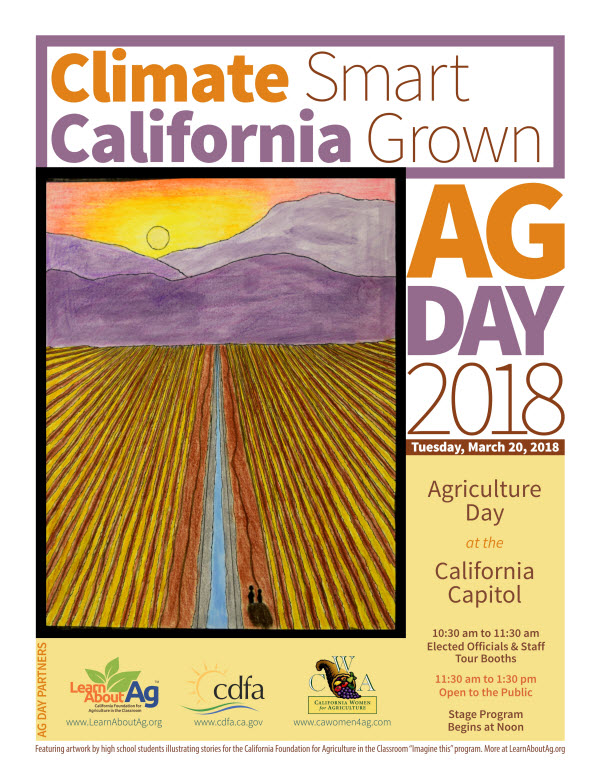
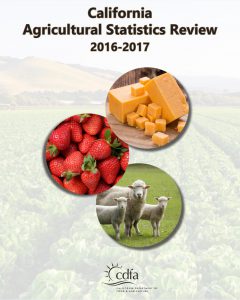 In 2016 California’s farms and ranches received more than $46 billion for their output. This represents a decrease of about six percent compared to 2015. Despite this decrease, California remains the leading US state for cash farm receipts.
In 2016 California’s farms and ranches received more than $46 billion for their output. This represents a decrease of about six percent compared to 2015. Despite this decrease, California remains the leading US state for cash farm receipts.